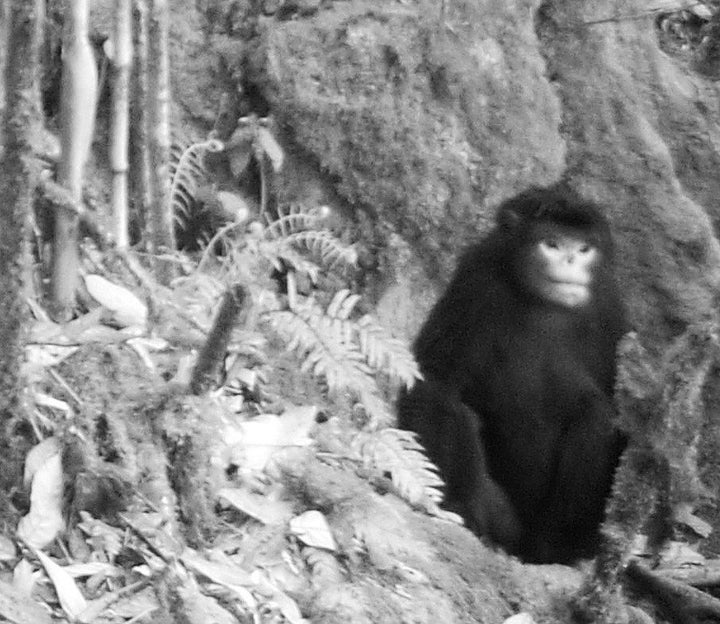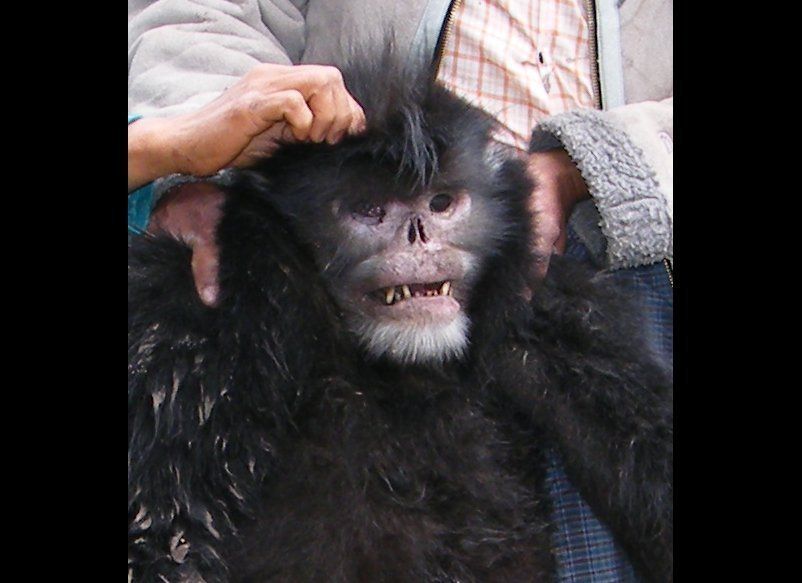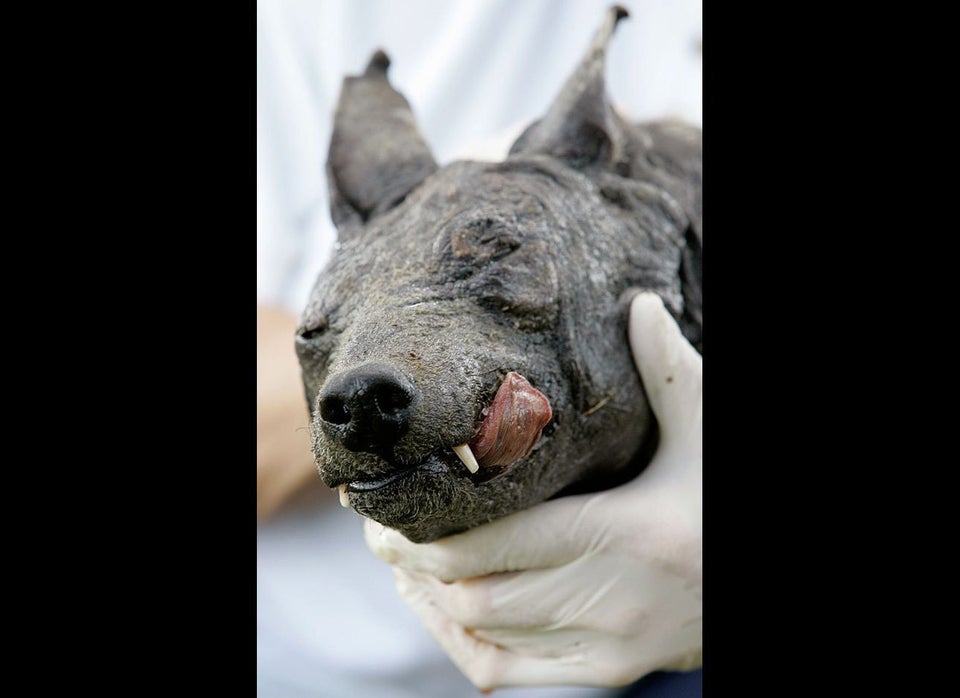
Cryptids are mythical, legendary creatures that include the likes of unicorns, Bigfoot, Yeti, sea monsters and other beasts not yet proven real.
But now, something that was once classified as a cryptid has come to life, recognized by science.
The first photos of a new primate, the Myanmar snub-nosed monkey -- dubbed Rhinopithecus strykeri -- have been released by researchers.
The unusual animal was first discovered in 2010 by conservationists in the Kachin State of northern Myanmar, also known as Burma, in southeast Asia.
Covered almost entirely in black fur, the monkey has an upturned nose, which causes it to sneeze when rainwater seeps in, making them easy to find in the jungle.
"There are snub-nosed monkeys all over Asia, but they don't quite look like this variety," said Loren Coleman, director of the International Cryptozoology Museum in Portland, Maine. "This face has an old-wisdom look to it, like an old, ancient man -- they certainly have a striking face."
CHECK OUT THESE IMAGES OF THE RARE MONKEYS: (Story continues after slideshow)
While there are other examples of snub-nosed monkeys in Asia, China and Tibet, the new ones are a little different.
"It is the only entirely black snub-nosed monkey -- except for a white chin beard," said Frank Momberg, Myanmar program coordinator for Fauna & Flora International, who led the snub-nosed monkey expeditions.
"The DNA also differs very significantly, and there is only an estimated 250 to 500 individuals in the wild, with their population trend declining," Momberg told The Huffington Post in an email from Myanmar.
Researchers confirmed the existence of the unusual monkeys after one was captured and killed by a hunter in 2010. That led to the creation of a team led by field biologist Jeremy Holden determined to photograph the animals in the remote area where very few were left.
The combined efforts of Fauna & Flora International, Biodiversity and Nature Conservation Association and the People Resources and Conservation Foundation led to special camera traps in the mountainous region near China to capture the elusive simians in mid-2011 -- with some images appearing as black and white.
"At night, the cameras take infrared black-and-white images. The first photos were taken in the very early morning, when there was not enough daylight for the color sensors," Momberg said.
Those images have finally been released to the world.
Part of the problem faced by the dwindling snub-nose monkey numbers in this region is that outside researchers and scientists didn't know about them until stories emerged from the area in 2010 of villagers capturing and eating the animals.
WATCH THIS VIDEO SHOWING SIMILAR SNUB-NOSED MONKEYS IN CHINA:
"We interviewed all hunters in villages surrounding the monkeys' range," Momberg wrote. "As the snub-nosed monkeys come to the ground, especially in early summer to eat young bamboo shoots, they get easily trapped.
"Hunting is done for local meat consumption and wildlife trade. The close proximity to China means there is a huge demand for wildlife products, especially monkey bones, which are processed into medicinal balm," he explained.
The animals also are threatened by Chinese logging companies opening road access for hunters and degrading the snub-nosed monkey habitat, Momberg said.
The animals may soon be classified as critically endangered by the International Union for Conservation of Nature.
The Myanmar monkeys are part of cryptozoology, the study of hidden animals or alleged creatures that have remained undiscovered, despite many anecdotal accounts, like the Loch Ness Monster and the blood-sucking Chupacabra.
"This is definitely a cryptid that was discovered. It's cryptozoological because here you have the indigenous people who were talking about these monkeys, reporting them and killing them to eat," said Coleman.
"And then scientists came in and were shown various body parts and finally one of the dead ones, and that's why the news back in 2010 announced the discovery of the monkeys, because they had an actual dead specimen," he added.
CHECK OUT THESE EXAMPLES OF CRYPTOZOOLOGY, YET TO BE PROVEN:
That, according to Coleman, is what cryptozoology is all about.
"You talk to local peoples about cryptids -- unidentified animals -- and then you get the actual living or dead animal and discover them. So, yes, this was one of the most remarkable cryptozoological discoveries of 2010, and then reconfirmed, as we're seeing now, with living specimens being photographed and videotaped."
Momberg, who is still overseas researching these new animals, added a final note for HuffPost readers: "I believe there is another primate species out there, to be discovered in Myanmar's far north."


